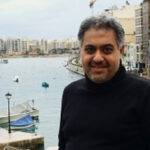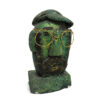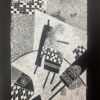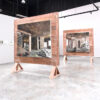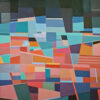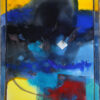I don’t know of an Emirati artist who academically specialized in Relief Sculpture as Dr. Najat Makki, that is if she’s not the first Emirati female artist to choose sculpture art as a specialty in general. Najat Makki, born in Dubai in 1953, was granted a scholarship from the government to study in the College of Fine Arts in Cairo in 1977, to graduate in 1982 with a bachelor’s degree in fine arts, and a major in Relief Sculpture. When she came back to the UAE after graduation, she exerted both solo and mutual efforts towards enriching the cultural life in the UAE by producing different artworks, participating in exhibitions, and in educational art mediums, in collaboration with Emirates Fine Arts Society and the Ministry of Education, and other entities concerned with visual arts in the UAE. After many participations in collective and public galleries, Najat Makki went back to pursue academic knowledge, she obtained a diploma in fine arts from Cairo in 1996, then she got a Master’s degree in arts from Cairo University in 1998 in the field of relief sculpture and medallion design, to conclude this phase in 2001 by submitting her doctoral dissertation in the College of Fine Arts in Cairo, also in the field of designing metal coins. Such a vivid and ambitious academic career for a woman from Emirati Society, which did not grow wide open to fine arts until the last 4 decades.
Even though Najat was most known for her 2D pieces; i.e. painting, of which she produced many, actually, yet this article would be dedicated to her sculptural pieces only, or her experience in the art of sculpturing, which is similar, in some aspects, to her studying days colleague, Emirati artist Abdul Rahim Salem. Of those aspects we mention: using many and different raw materials, using many and different methods and styles, inclination towards relief sculpture, and the emergence of abstract expressionism in some pieces. Najat has featured her sculptural artworks in many exhibitions, especially the public exhibitions held by Emirates Fine Arts Society, and she participated in many forums for the art of sculpture (Sculpture International Forum in China – 2008), this pioneering experience in sculpture and painting has qualified her to win the State Appreciation Award in its second edition in 2008.
Najat Makki has practiced producing sculptural artworks during her studies in college, whether 3D sculpture or relief sculpture. However, some of the artworks she produced in her third year in college, supposedly the last year of studying, didn’t have the relief theme of sculpture in the traditional sense, especially the one she made out of clay and called “Two Girlfriends”, which shows two girls, one girl’s arm is surrounding the other girl’s right arm, while the latter is placing her right hand on the other girl’s left thigh. One cannot miss what such configuration holds of varied spaces, ones that could be significantly hidden if Najat hadn’t chosen – perhaps with no intention of her – to bring all those spaces and supposed shapes together within the artwork, thus becoming a painting. Relief sculpture in that sense, also some abstract expressionism artworks that exaggerate this deterrence of sculptural conglomeration, and linear sculpture artworks, they all give a feeling that there is no substantial difference between a painting and a sculpture, that is because the more you strip the sculptural art piece of its third dimension, the closer to a painting it becomes, and vice versa.
This concept has accompanied the artist in her most famous painting, and in her female plane figures, made out of crystal, which I see, in most of them, what I call “Illustrated sculptural concepts”. The “Two Girlfriends” artwork indeed seems to have utilized some of the ancient relief sculpture methods, which were used to engrave the walls of temples and others, more like the Ancient Egyptians, for instance. These ancient relief art pieces strip away the sculptural feature, and emphasize the flattened features. However, the ancient relief sculpture methods in other civilizations were more full of three dimensions, and it reached its peak of catering to the suggestive details of the European arts. In many of the European relief sculptures, the persons and figures placed in the forefront of the artwork are more in three dimensions, yet it becomes less, to a point of flattening once those subjects are far from the front. This is a lot like coloring the subjects in the painting’s front in dark colors, to signify their closeness to the viewer’s eye, and coloring those in the background in fading colors to signify being far.
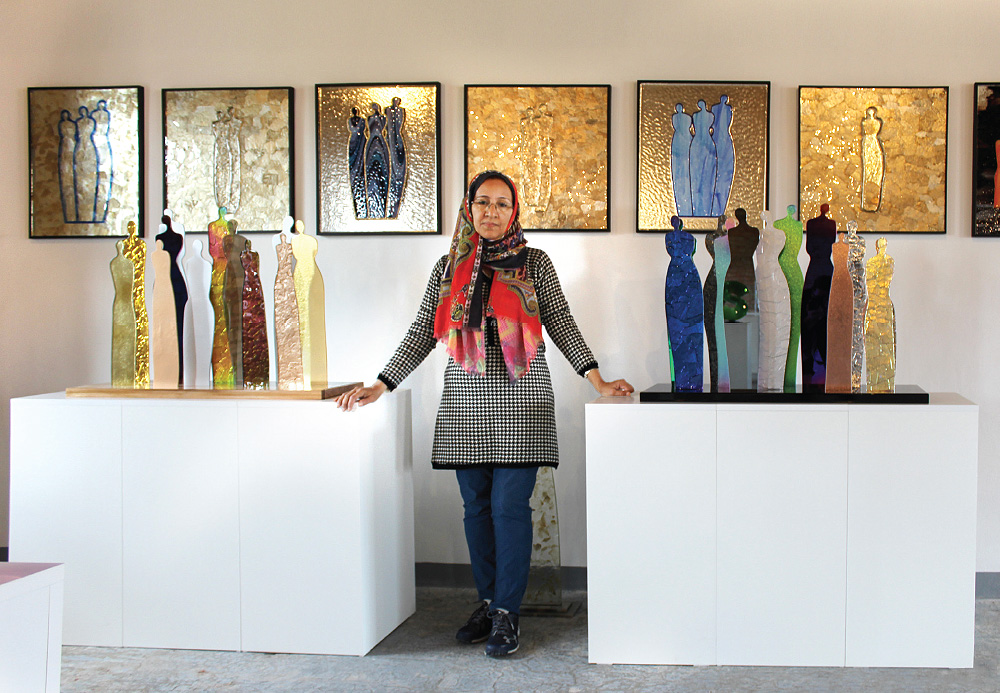
This soft flattening of the subject volume can be spotted in many artworks of the artist, which she produced – or product most – during the period she was in college, such as the studying of a woman’s face, or his piece “The Sea Mermaid”. However, in many other relief sculpture pieces in the same period, she strengthened the embodiment of the subjects’ figures, such as her artwork “Horses Race”, and her other artwork “To The Market”, yet this latter piece has been affected by the modernism configuration methods, which was still trending in the Arab world at that point, from the late 70s to the early 80s. Those methods have benefited from most European art trends, which appeared at the beginning of the 20th century such as cubism, Italian Futurism, Russian Constructivism, German Expressionism, and many others. Those were represented by the triangulation and cubism of figures and subjects in Najat’s mentioned artwork, whether it was the triangle and cube shapes in the background where they’re most apparent, or in some ends and parts of female figures in the middle of the artwork. They all contribute to the overall ambiance of the artwork, which evidently shows the desire to display the aesthetic suggestive features of shapes that suit the modern time and its modern tendencies, rather than displaying the reality as it was in the ancient methods. This desire to display the aesthetic suggestive features motivated Najat Makki at some point in the 80s to produce a mere abstract piece where the wooden triangles overlap and intertwine on a panel of wood also. Despite the abstractionist feature of this piece, it still reminds us of the triangles of Sadu art known in the traditional Arab and global desert arts. In all cases, I believe this artwork; (To the Market) I mean, in addition to the first artwork (Two Girlfriends) have both been the early glimpses to Najat’s graduation project she’d later work on, starting in 1980, which was also a relief sculpture artwork, which she named (Childhood). In that artwork, she utilized both previously mentioned pieces. From (Two Girlfriends), she borrowed the approach to spaces and shapes on the piece’s surface, and from (To the Market) she borrowed the triangulation and cubing. In her graduation project, Najat seemed more confident than ever, more certain and aware of what she was doing. This piece, (Childhood), came to existence – as I think – perfectly mature, compared to the previous artworks.
In the 80s, Najat produced some relief sculptures using gypsum with a background of rough fabric. In the 90s and after, some new relief sculptures came to light as part of Najat Makki experience. What’s most significant about those artworks is perhaps their ability to set the context to refer to a miserable human situation, and using a bit of expressionism in that, in addition to coloring the pieces. An example of those pieces is (Suffering) artwork owned by Sharjah Art Foundation, and another one is (Palestine), the latter was made in 1995 and its size is 120×100 cm. those two pieces reflect the artist’s energy and her ability to create the main configurations and secondary ones to support the artwork subject, which is the human faces anticipating arriving at their hopes, and the humane aspect which the artist wants to emphasize is quite clear. In addition to that, the welded metal has been introduced within the artist’s relief sculptures, one of which is the welded steel configuration on a wooden panel that the artist created in the 90s. Najat also used welded metals in her artworks in the 80s, but they were three-dimensional as we would come to see later.
Now, going back to speaking of three-dimensional artworks created by Najat Makki during her career, she has indeed produced many artworks trying to capture woman’s conditions. Some were made of clay, clay with fabric, fiber, polystyrene, or else. She created, out of clay with fabric, an artwork she considered experimental, in the sense that she attempted to create a statue of a woman using clay with fabric, then she left it until the statue material started to wear in some parts, meaning to reflect its inner fragility, erosion, or even its breakage on the inside, or any other concept that could be concluded from the nature of creating this artwork. In that sense, it is quite similar to another statue of the artist, which is the colored statue of a woman made out of fiber, which also shows the sudden breakage of the self. These artworks could be attributed to a previous experience the artist made of clay alone, and it also manifests the breakage of the woman’s self. In another piece produced in 1999, which was a one-meter-long three-dimensional sculpture made out of Polystyrene, we see a figure of a standing woman with long legs, and unrealistic body proportions with a bit of exaggeration in some areas, aiming to express her personality and self, i.e. the personality of the subject. We can also see the woman’s costume wrapped around most of her body in a way that suggests unity and sufficiency. This status is a part of the British Airways collection. The artist also produced in the 90s a nice statue out of gypsum aged by coloring, it is called (Lady Lutist), and it represents a girl or a woman playing the lute. Moreover, at the (Sculpture International Forum in China – 2008), Najat produced some sculptural artworks with dual figures. One of them was a statue of two persons, with signs of breakage on it, which was a distinguishing feature of some of her previously mentioned artworks. Another one was a statue of a man and a woman, standing close side to side and looking forward, but the woman’s body is a step ahead of the man’s body; this statue was processed delicately and I saw in it the same maturity I saw in the artist’s graduation project (Childhood).
Najat has also produced welded metal artworks, benefitting from abstract expressionism sculpturing values. In the 80s of the 20th century, she introduced sculptures that could be regarded as abstract expressionism sculpturing as they were executed by welding pieces of metal. However, those sculptures weren’t as big as the
ones seen in the American abstract expressionism sculptures, which are usually large, yet her sculptures subtly employed the artistic method in appearance, as they combined two contradicting natures; one is the rough nature of production, which the used steel parts or the sharp metal pieces suggest, plus, the way they were welded together and so on. The second nature is the passion and emotions that the configurations of these sculptures are trying to imply. Of those artworks, we mention: A Face with a Chain, produced in 1982, 15x30x57 cm; A Face with wavy Hair in the Void, produced in 1984, 20×23.5×48 cm; Metal Circle-shaped configuration, penetrated by sharp steel parts, produced in 1984, 10x39x40 cm. The way I see it, this contrast I claim to have emerged in between those two natures is what differentiates those sculptures as their aesthetic unity is mainly founded on this contrast between the two contradictories. Nathan Nopler, an art critic, has stated that “The contrast between opposites or contradictories could be defined as the relation between two extremes, it is an expression of differences, and this indicates having a link and unity between contrasting items. (1)
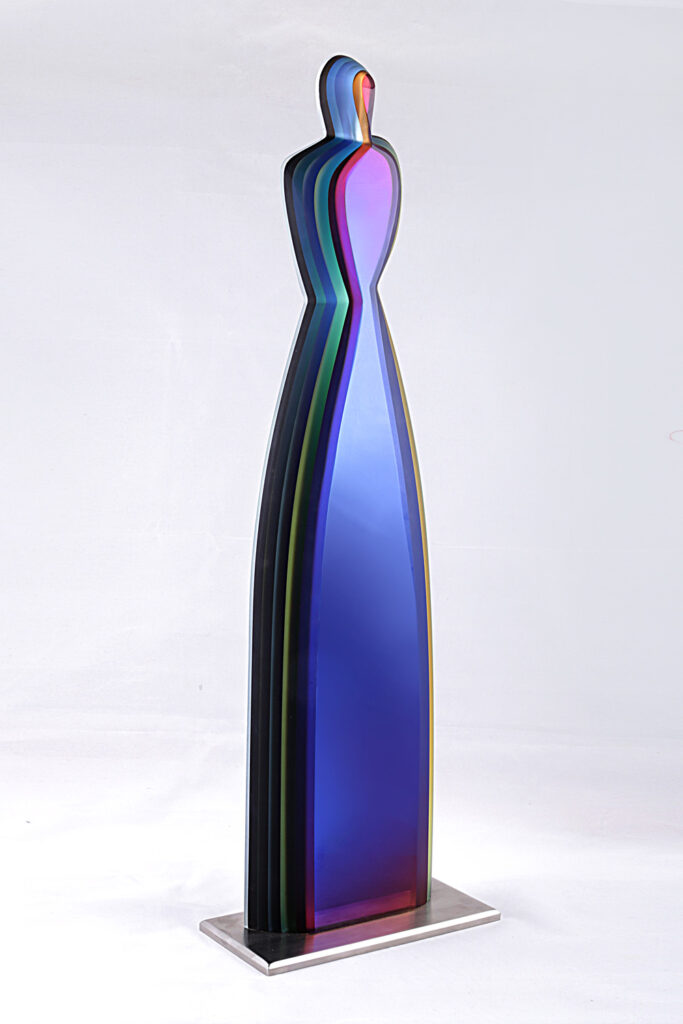
“Woman”, Glass, done in Czech Republic, 2017
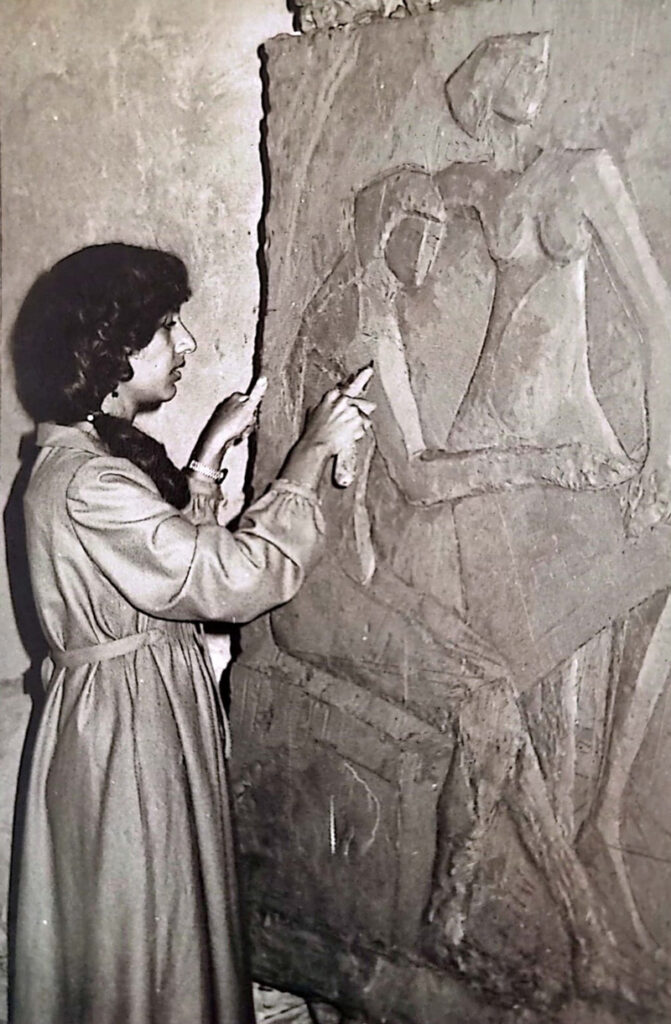
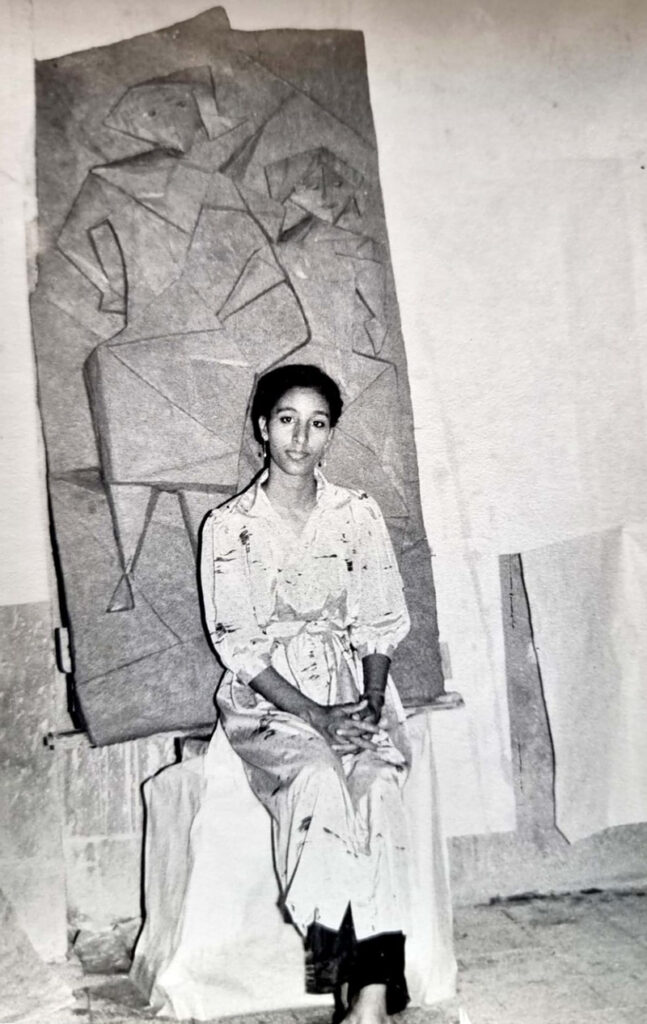
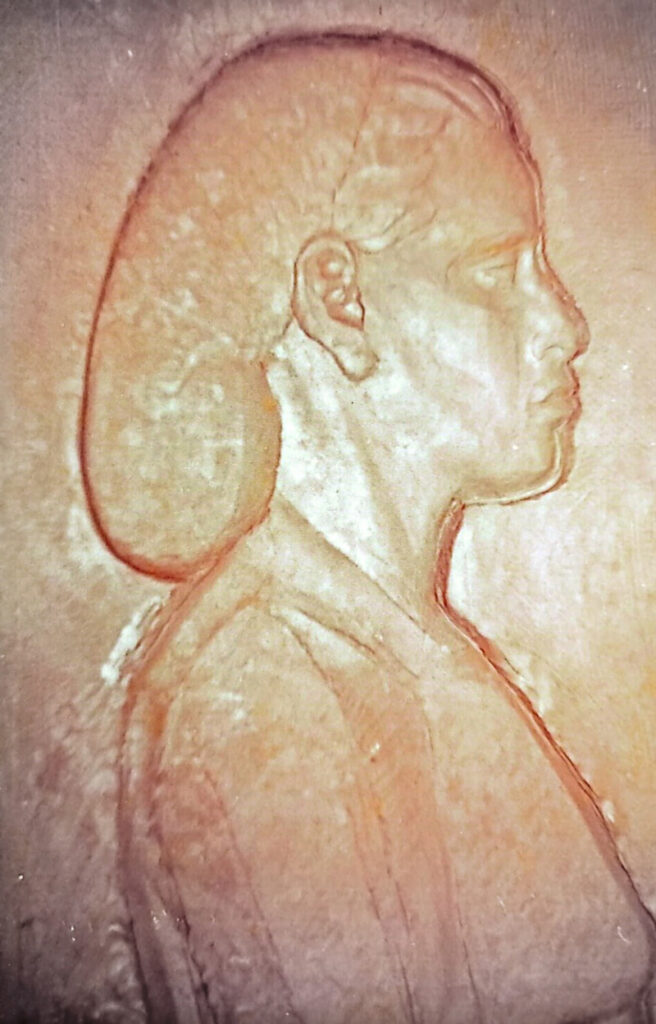



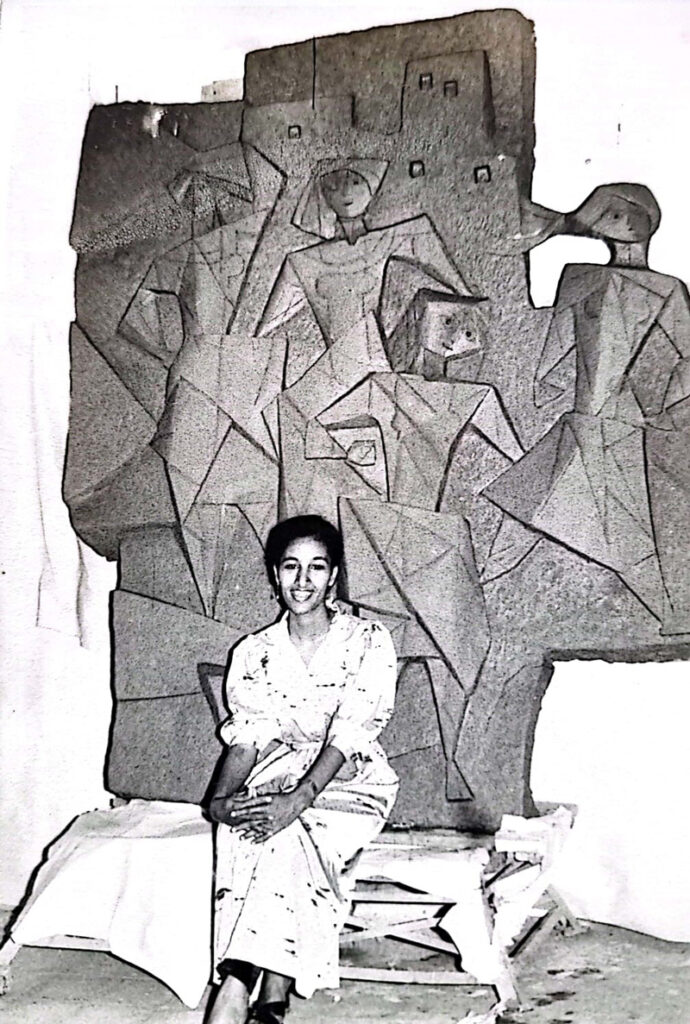
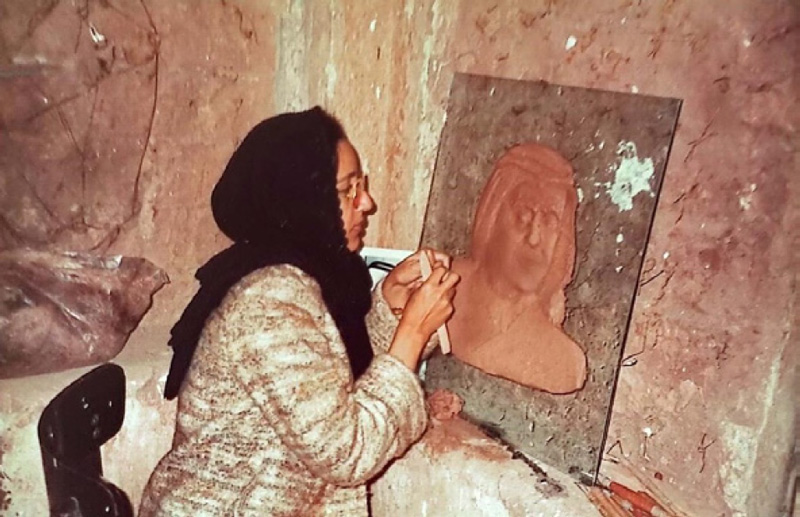
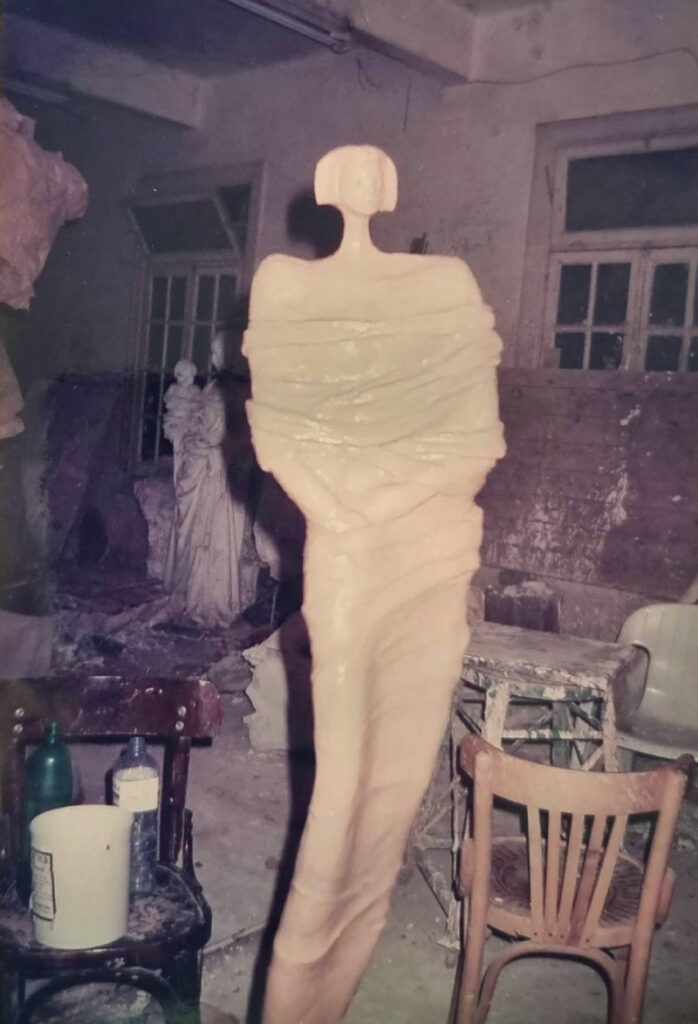
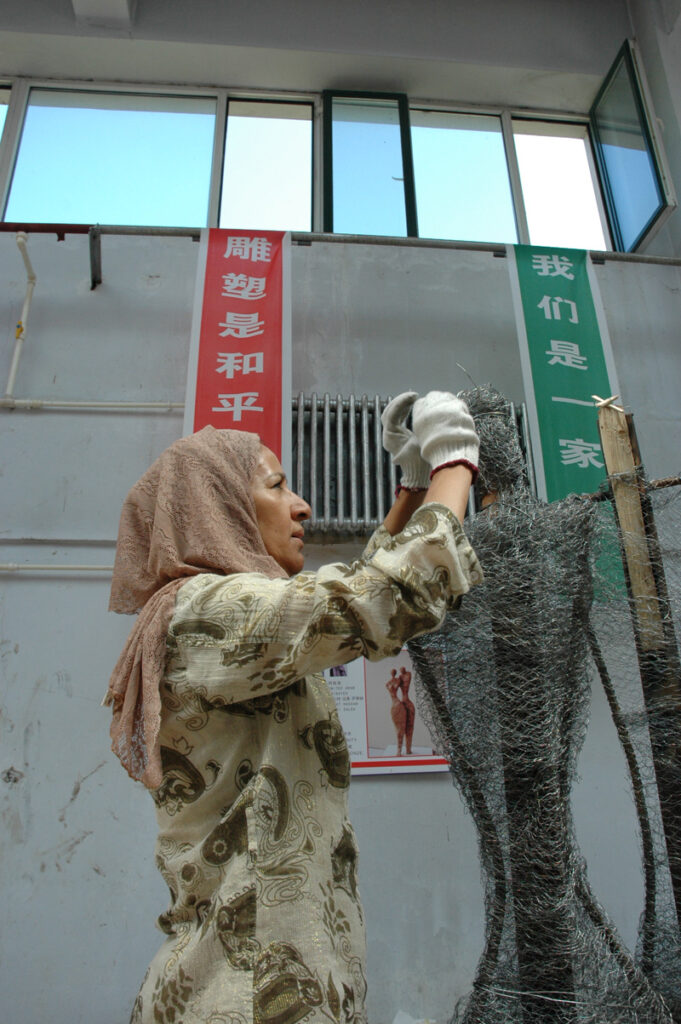

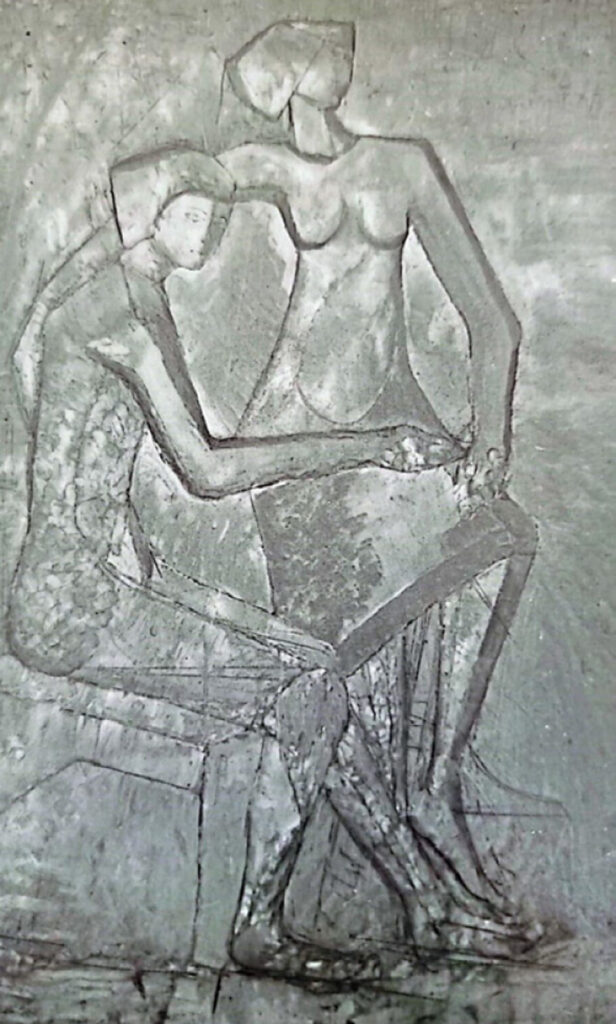

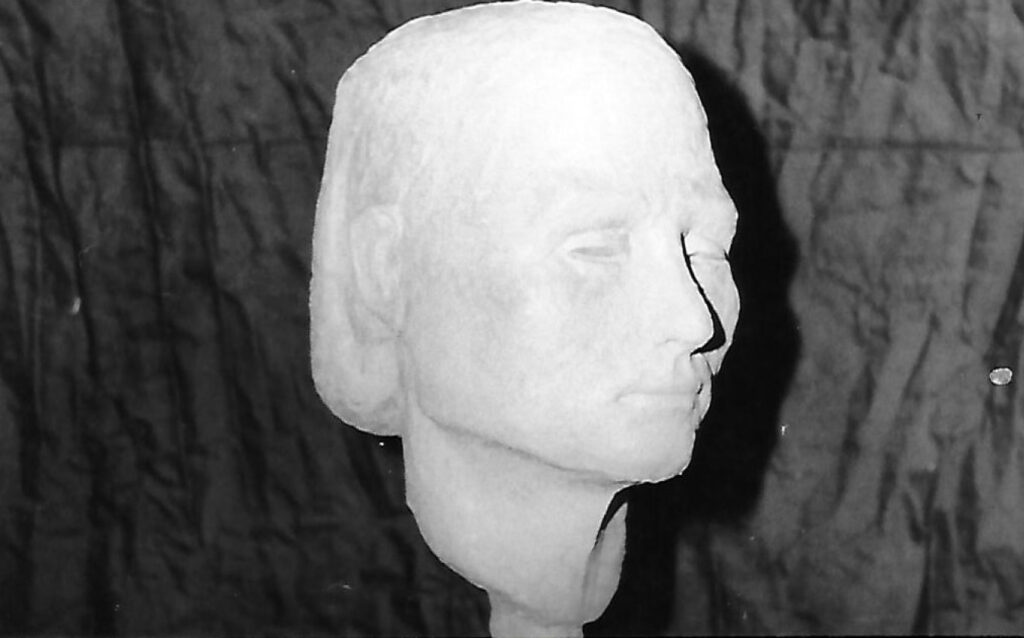

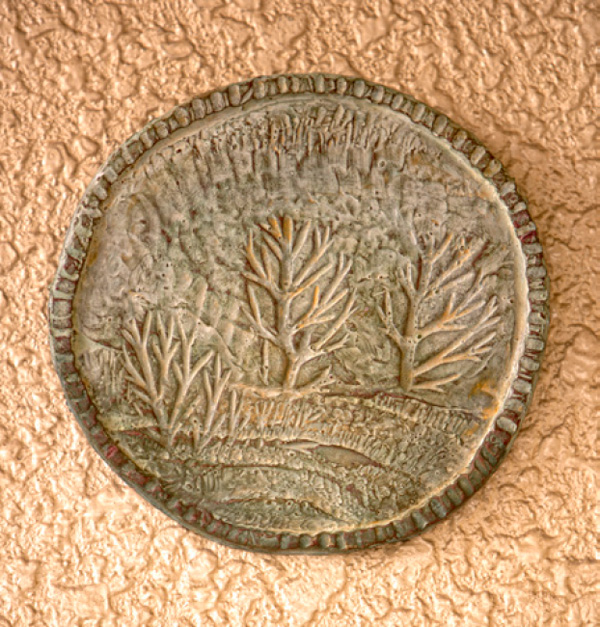

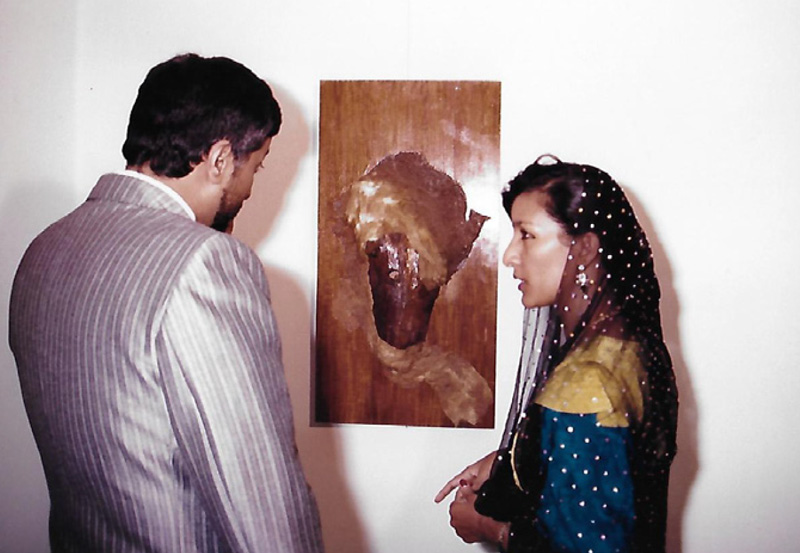
References
1. See his book (The Dialogue of Vision – An Entry to Art Tasting and The Aesthetical Experience)
A researcher for knowledge, visual artist, art critic, poet, musician, and director of the Artistic Heritage Department at Sharjah Institute for Heritage.


